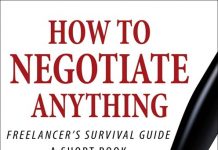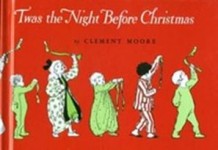 A controversial story hit my newsfeed this weekend: it seems the Toronto Public Library has launched a new program aimed at reducing wait times for popular best-sellers: they are plumping up the catalogue by buying used copies from library patrons.
A controversial story hit my newsfeed this weekend: it seems the Toronto Public Library has launched a new program aimed at reducing wait times for popular best-sellers: they are plumping up the catalogue by buying used copies from library patrons.
As the Toronto Star explains:
The books it has listed on its “Sell Books to the Library” website page are not books that the public does not want; their authors are not ones who, the great lie of media and festivals, stand to benefit from extra publicity. No, the list is comprised of books so popular that the library is having a hard time meeting existing demand. December’s inaugural list includes, for instance, Canadian authors Margaret Atwood, David Bezmozgis, Ann-Marie MacDonald, Kathleen Reichs, Peter Robinson, Carrie Snyder, Miriam Toews, as well as Sean Michaels and Thomas King, winners of this year’s Scotiabank Giller and Governor-General’s Literary Award for Fiction respectively.
There is some histrionic rhetoric I am ignoring in the Star’s write-up, but their point is a good one. There is a difference between an individual customer engaging in a little comparison-shop in search of the lowest price, and in a public institution supported by taxpayer dollars doing it. The library has long served an important function in supporting the literary community. It has never been about penny-pinching the bottom line.
Now here’s the question, and I wasn’t able to find the answer. In Canada, our libraries pay a royalty to authors when their books are borrowed. Do the books purchased under this program generate royalties? The page on the Toronto Library site doesn’t say, nor do they say in the press release announcing the program. Do any readers know the answer? It would make a difference in how I view the program.

































This service is actually about one month old and when it launched infoDOCKET.com posted quotes from a Canadian writer’s op/ed about it.
http://www.infodocket.com/2014/12/21/public-libraries-author-shares-views-on-toronto-public-librarys-new-sell-books-to-the-library-program/
I assume you are referring to the Canada Council’s Public Lending Right (PLR) program, which pays authors who register for the program for the presence of their books in a sample of Canadian public libraries. The page, “How the PLR Program Works” (http://plr-dpp.ca/PLR/program/PLR_program.aspx) provides information related to your question:
“PLR payments are based on the presence of an eligible book in one or more of the public library catalogues selected by the PLR Commission for its annual sample.” […] “The number of copies found in a library is not taken into account.” […] The basic elements of the calculation of each author payment are the number of books each author has registered, the number of times each of the books was found and the PLR payment budget.”
It appears that payment is based on the number of libraries in which one or more copies of an author’s book(s) are held, and not on the number of copies in a library, nor on circulation of those copies. So the presence of extra copies should not affect an author’s payments under the PLR program.
This “story” is only “controversial” if you start from the premise that a library must use your personal choice of lawful methods to acquire materials.
Quick, genius: What‘s ARP, what’s a blue form, and what roles do they play in the TPL acquisitions process?
I used to buy a lot of paper books, before ebooks became available.
After I read them, I kept some, but others were tossed into my local library’s donation bin. (Note: NOT the Toronto Public Library) Some of the books I donated were put on the library’s shelves and were loaned to other library patrons. (I could tell because it was my habit to put my initials on a particular page of every paper book I bought, and I checked the library shelves a few times after donating a current best-seller.)
If the library didn’t keep the book for themselves, I assume that it was sold on their perpetual “used books for sale” table, with the money going to various programs, including buying new books that the library did want.
That the Toronto Public Library has formalized the donation process by asking for specific books to be donated is not surprising in this era of cutbacks and shrinking budgets.